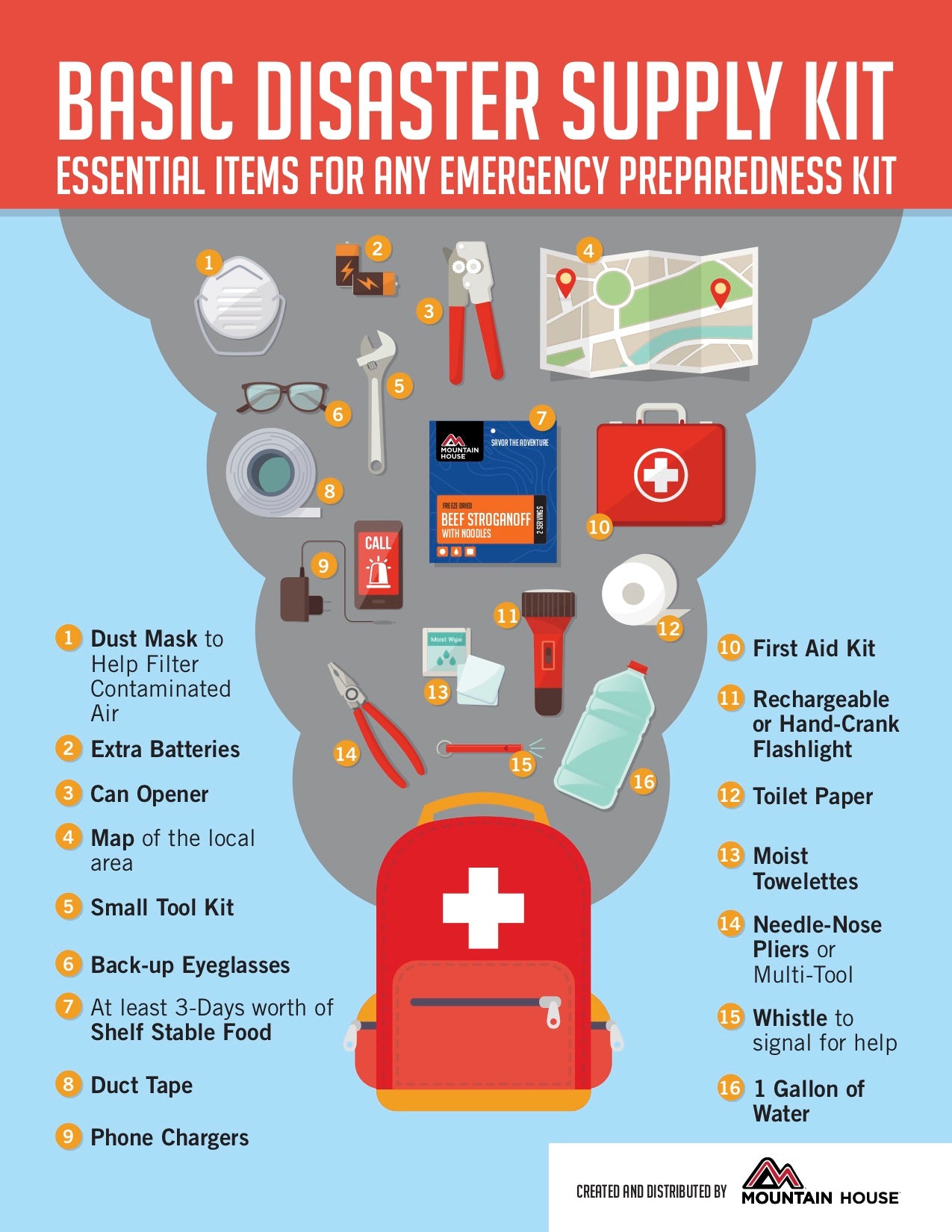Flood Alerts And Emergency Preparedness: Ensuring Your Safety

Table of Contents
Understanding Flood Alerts and Warnings
Navigating the various flood alert systems is crucial for effective response. Different levels of alerts indicate varying degrees of risk, requiring different actions. Reliable sources for receiving timely and accurate flood alerts are essential for your safety.
- Flood Watch: Conditions are favorable for flooding. Stay informed and be prepared to take action if necessary.
- Flood Warning: Flooding is occurring or is imminent. Take immediate action to protect yourself and your property.
- Flood Advisory: Flooding is possible in certain areas. Be aware of the potential risk and monitor conditions closely.
Reliable sources for flood alerts include:
- The National Weather Service (NWS): The primary source for weather-related alerts in the United States. Their website and mobile app provide up-to-the-minute information.
- NOAA Weather Radio: A dedicated radio service that broadcasts continuous weather information, including flood warnings and advisories.
- Local News and Weather Apps: Many local news channels and weather apps provide real-time alerts tailored to your specific location. Ensure you've enabled emergency alerts on your mobile device.
- Your Local Emergency Management Agency: Sign up for their alert system to receive timely information specific to your community. Understanding the severity levels of flood alerts—from a simple advisory to a severe warning—is vital for appropriate response. Don't wait for a warning to act; preparation is key.
Building Your Emergency Preparedness Plan
A comprehensive emergency plan is your first line of defense against the impact of a flood. It involves proactive steps to ensure your safety and minimize potential damage.
- Assemble an Emergency Kit: This kit should include essentials like:
- Water (one gallon per person per day for at least three days)
- Non-perishable food (enough for at least three days)
- First-aid kit with essential medications
- Important documents (copies of identification, insurance policies, medical records)
- Flashlight, batteries, and a hand-crank or battery-powered radio
- Whistle to signal for help
- Dust mask to help filter contaminated air
- Plastic sheeting and duct tape to shelter in place
- Moist towelettes, garbage bags, and plastic ties (for personal sanitation)
- Create a Family Communication Plan: Designate a meeting place and multiple contact methods (phone numbers, email addresses) to ensure everyone can connect during and after the flood.
- Identify Evacuation Routes and Safe Locations: Know multiple routes to higher ground and identify safe locations like shelters or the homes of family/friends in safer areas.
- Consider Flood Insurance: Flood insurance is often not included in standard homeowners or renters insurance. Understanding your flood risk and securing adequate coverage is a vital step in protecting your financial well-being. This also helps with faster recovery.
Responding to a Flood Warning
When a flood warning is issued, immediate action is crucial. Your preparedness plan should guide your response.
- Evacuate if Necessary: Follow instructions from emergency officials. Do not attempt to drive through flooded areas; even shallow water can sweep a vehicle away.
- Secure Your Home: Bring loose outdoor items inside or secure them to prevent them from being damaged or carried away by floodwaters.
- Move Valuables to Higher Ground: Elevate important items and appliances to protect them from potential water damage.
- Turn Off Utilities Safely: Turn off gas, electricity, and water if instructed to do so by authorities or if you anticipate flooding in your home. Never touch electrical equipment while standing in water.
Post-flood safety:
- Avoid floodwaters; they may be contaminated with sewage and other hazardous materials.
- Be cautious of downed power lines.
- Wear protective gear during cleanup.
- Report damage to your insurance company and local authorities.
Protecting Your Property from Flood Damage
Proactive flood mitigation measures can significantly reduce the risk of damage and the financial burden of recovery.
- Improve Drainage: Ensure proper grading around your home to direct water away from the foundation. Clean gutters and downspouts regularly.
- Install a Sump Pump: A sump pump can help remove water that accumulates in your basement or crawlspace.
- Flood-Proof Your Basement: Seal cracks and crevices in your foundation to prevent water infiltration. Consider waterproof paint or sealant.
- Flood Barriers: Install flood barriers or sandbags to protect entrances and vulnerable areas. Elevation is crucial; consider elevating electrical outlets and appliances.
Conclusion
Understanding flood alerts and developing a comprehensive emergency preparedness plan are vital steps in ensuring your safety and minimizing the impact of flooding. Proactive planning empowers you to respond effectively to flood warnings, protect your property, and safeguard your loved ones. Don't wait for a disaster to strike; develop your flood emergency preparedness plan today. Utilize the resources provided by the National Weather Service ([link to NWS website]) and FEMA ([link to FEMA website]) to enhance your understanding and preparedness. Share this information with your family, friends, and community to promote wider awareness and improve disaster resilience. Remember, being prepared is the best defense against the devastating effects of floods.

Featured Posts
-
 Hugo De Waha Laureat De La Bourse Payot Pour Jeunes Journalistes
May 26, 2025
Hugo De Waha Laureat De La Bourse Payot Pour Jeunes Journalistes
May 26, 2025 -
 Is Fascism Rising Delaware Governors Warning In The Post Trump World
May 26, 2025
Is Fascism Rising Delaware Governors Warning In The Post Trump World
May 26, 2025 -
 Powells Warning How Tariffs Could Hinder The Feds Objectives
May 26, 2025
Powells Warning How Tariffs Could Hinder The Feds Objectives
May 26, 2025 -
 Transformation Des Locaux Rtbf Au Palais Des Congres De Liege
May 26, 2025
Transformation Des Locaux Rtbf Au Palais Des Congres De Liege
May 26, 2025 -
 Iptv Illegal Rtbf Et Rtl Belgium Unissent Leurs Forces Contre Le Piratage
May 26, 2025
Iptv Illegal Rtbf Et Rtl Belgium Unissent Leurs Forces Contre Le Piratage
May 26, 2025
Latest Posts
-
 Is A Kalvin Phillips Return To Leeds United On The Cards This Summer
May 28, 2025
Is A Kalvin Phillips Return To Leeds United On The Cards This Summer
May 28, 2025 -
 Watch Pacers Vs Bulls Game Time And Streaming Info For March 10
May 28, 2025
Watch Pacers Vs Bulls Game Time And Streaming Info For March 10
May 28, 2025 -
 Tyrese Haliburton Injury Status Latest News For Bulls Pacers Game
May 28, 2025
Tyrese Haliburton Injury Status Latest News For Bulls Pacers Game
May 28, 2025 -
 Pacers Vs Bulls Tyrese Haliburtons Game Time Decision
May 28, 2025
Pacers Vs Bulls Tyrese Haliburtons Game Time Decision
May 28, 2025 -
 Nba 2 K25 Pre Playoff Player Rating Boost In Latest Update
May 28, 2025
Nba 2 K25 Pre Playoff Player Rating Boost In Latest Update
May 28, 2025
